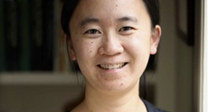Visualization
Visualization, sometimes referred to as visual data analysis, uses the graphical representation of data as a means of gaining understanding and insight into the data. Visualization research at SCI has focused on applications spanning computational fluid dynamics, medical imaging and analysis, biomedical data analysis, healthcare data analysis, weather data analysis, poetry, network and graph analysis, financial data analysis, etc.Research involves novel algorithm and technique development to building tools and systems that assist in the comprehension of massive amounts of (scientific) data. We also research the process of creating successful visualizations.
We strongly believe in the role of interactivity in visual data analysis. Therefore, much of our research is concerned with creating visualizations that are intuitive to interact with and also render at interactive rates.
Visualization at SCI includes the academic subfields of Scientific Visualization, Information Visualization and Visual Analytics.

Mike Kirby
Uncertainty Visualization
Alex Lex
Information VisualizationCenters and Labs:
- Visualization Design Lab (VDL)
- CEDMAV
- POWDER Display Wall
- Modeling, Display, and Understanding Uncertainty in Simulations for Policy Decision Making
- Topological Data Analysis for Large Network Visualization
Funded Research Projects:
Publications in Visualization:
  High-Quality Progressive Alignment of Large 3D Microscopy Data A. Venkat, D. Hoang, A. Gyulassy, P.T. Bremer, F. Federer, V. Pascucci. In 2022 IEEE 12th Symposium on Large Data Analysis and Visualization (LDAV), pp. 1--10. 2022. DOI: 10.1109/LDAV57265.2022.9966406 Large-scale three-dimensional (3D) microscopy acquisitions fre-quently create terabytes of image data at high resolution and magni-fication. Imaging large specimens at high magnifications requires acquiring 3D overlapping image stacks as tiles arranged on a two-dimensional (2D) grid that must subsequently be aligned and fused into a single 3D volume. Due to their sheer size, aligning many overlapping gigabyte-sized 3D tiles in parallel and at full resolution is memory intensive and often I/O bound. Current techniques trade accuracy for scalability, perform alignment on subsampled images, and require additional postprocess algorithms to refine the alignment quality, usually with high computational requirements. One common solution to the memory problem is to subdivide the overlap region into smaller chunks (sub-blocks) and align the sub-block pairs in parallel, choosing the pair with the most reliable alignment to determine the global transformation. Yet aligning all sub-block pairs at full resolution remains computationally expensive. The key to quickly developing a fast, high-quality, low-memory solution is to identify a single or a small set of sub-blocks that give good alignment at full resolution without touching all the overlapping data. In this paper, we present a new iterative approach that leverages coarse resolution alignments to progressively refine and align only the promising candidates at finer resolutions, thereby aligning only a small user-defined number of sub-blocks at full resolution to determine the lowest error transformation between pairwise overlapping tiles. Our progressive approach is 2.6x faster than the state of the art, requires less than 450MB of peak RAM (per parallel thread), and offers a higher quality alignment without the need for additional postprocessing refinement steps to correct for alignment errors. |
  UncertainSCI: Uncertainty quantification for computational models in biomedicine and bioengineering A. Narayan, Z. Liu, J. A. Bergquist, C. Charlebois, S. Rampersad, L. Rupp, D. Brooks, D. White, J. Tate, R. S. MacLeod. In Computers in Biology and Medicine, 2022. DOI: https://doi.org/10.1016/j.compbiomed.2022.106407 Background: Methods:
We developed and distributed a new open-source Python-based software tool, UncertainSCI, which employs advanced parameter sampling techniques to build polynomial chaos (PC) emulators that can be used to predict model outputs for general parameter values. Uncertainty of model outputs is studied by modeling parameters as random variables, and model output statistics and sensitivities are then easily computed from the emulator. Our approaches utilize modern, near-optimal techniques for sampling and PC construction based on weighted Fekete points constructed by subsampling from a suitably randomized candidate set. Results:
Concentrating on two test cases—modeling bioelectric potentials in the heart and electric stimulation in the brain—we illustrate the use of UncertainSCI to estimate variability, statistics, and sensitivities associated with multiple parameters in these models. Conclusion:
UncertainSCI is a powerful yet lightweight tool enabling sophisticated probing of parametric variability and uncertainty in biomedical simulations. Its non-intrusive pipeline allows users to leverage existing software libraries and suites to accurately ascertain parametric uncertainty in a variety of applications. |
  Comparing different nonlinear dimensionality reduction techniques for data-driven unsteady fluid flow modeling H. Csala, S.T.M. Dawson, A. Arzani. In Physics of Fluids, AIP Publishing, 2022. DOI: https://doi.org/10.1063/5.0127284 Computational fluid dynamics (CFD) is known for producing high-dimensional spatiotemporal data. Recent advances in machine learning (ML) have introduced a myriad of techniques for extracting physical information from CFD. Identifying an optimal set of coordinates for representing the data in a low-dimensional embedding is a crucial first step toward data-driven reduced-order modeling and other ML tasks. This is usually done via principal component analysis (PCA), which gives an optimal linear approximation. However, fluid flows are often complex and have nonlinear structures, which cannot be discovered or efficiently represented by PCA. Several unsupervised ML algorithms have been developed in other branches of science for nonlinear dimensionality reduction (NDR), but have not been extensively used for fluid flows. Here, four manifold learning and two deep learning (autoencoder)-based NDR methods are investigated and compared to PCA. These are tested on two canonical fluid flow problems (laminar and turbulent) and two biomedical flows in brain aneurysms. The data reconstruction capabilities of these methods are compared, and the challenges are discussed. The temporal vs spatial arrangement of data and its influence on NDR mode extraction is investigated. Finally, the modes are qualitatively compared. The results suggest that using NDR methods would be beneficial for building more efficient reduced-order models of fluid flows. All NDR techniques resulted in smaller reconstruction errors for spatial reduction. Temporal reduction was a harder task; nevertheless, it resulted in physically interpretable modes. Our work is one of the first comprehensive comparisons of various NDR methods in unsteady flows. |
  Quick Clusters: A GPU-Parallel Partitioning for Efficient Path Tracing of Unstructured Volumetric Grids N. Morrical, A. Sahistan, U. Güdükbay, I. Wald, V. Pascucci. 2022. DOI: 10.13140/RG.2.2.34351.20648 We propose a simple, yet effective method for clustering finite elements in order to improve preprocessing times and rendering performance of unstructured volumetric grids. Rather than building bounding volume hierarchies (BVHs) over individual elements, we sort elements along a Hilbert curve and aggregate neighboring elements together, significantly improving BVH memory consumption. Then to further reduce memory consumption, we cluster the mesh on the fly into sub-meshes with smaller indices using series of efficient parallel mesh re-indexing operations. These clusters are then passed to a highly optimized ray tracing API for both point containment queries and ray-cluster intersection testing. Each cluster is assigned a maximum extinction value for adaptive sampling, which we rasterize into non-overlapping view-aligned bins allocated along the ray. These maximum extinction bins are then used to guide the placement of samples along the ray during visualization, significantly reducing the number of samples required and greatly improving overall visualization interactivity. Using our approach, we improve rendering performance over a competitive baseline on the NASA Mars Lander dataset by 6×(1FPS up to 6FPS including volumetric shadows) while simultaneously reducing memory consumption by 3×(33GB down to 11GB) and avoiding any offline preprocessing steps, enabling high quality interactive visualization on consumer graphics cards. By utilizing the full 48 GB of an RTX 8000, we improve performance of Lander by 17×(1FPS up to 17FPS), enabling new possibilities for large data exploration. |
 Scalable CPU Ray Tracing for In Situ Visualization Using OSPRay, W. Usher, J. Amstutz, J. Günther, A. Knoll, G. P. Johnson, C. Brownlee, A. Hota, B. Cherniak, T. Rowley, J. Jeffers, V. Pascucci . In In Situ Visualization for Computational Science, Springer International Publishing, pp. 353--374. 2022. ISBN: 978-3-030-81627-8 In situ visualization increasingly involves rendering large numbers of images for post hoc exploration. As both the number of images to be rendered and the data being rendered are large, the scalability of the rendering component is of key concern. Furthermore, the renderer must be able to support a wide range of data distributions, simulation configurations, and HPC systems to provide the flexibility required for a portable, general purpose in situ rendering package. In this chapter, we discuss recent developments in OSPRay’s support for MPI-parallel applications to provide a flexible and scalable rendering API, with a focus on how these developments can be applied to enable scalable, high-quality in situ visualization. |
  A Review of Three-Dimensional Medical Image Visualization L. Zhou, M. Fan, C. Hansen, C. R. Johnson, D. Weiskopf. In Health Data Science, Vol. 2022, 2022. DOI: https://doi.org/10.34133/2022/9840519 Importance. Medical images are essential for modern medicine and an important research subject in visualization. However, medical experts are often not aware of the many advanced three-dimensional (3D) medical image visualization techniques that could increase their capabilities in data analysis and assist the decision-making process for specific medical problems. Our paper provides a review of 3D visualization techniques for medical images, intending to bridge the gap between medical experts and visualization researchers. Highlights. Fundamental visualization techniques are revisited for various medical imaging modalities, from computational tomography to diffusion tensor imaging, featuring techniques that enhance spatial perception, which is critical for medical practices. The state-of-the-art of medical visualization is reviewed based on a procedure-oriented classification of medical problems for studies of individuals and populations. This paper summarizes free software tools for different modalities of medical images designed for various purposes, including visualization, analysis, and segmentation, and it provides respective Internet links. Conclusions. Visualization techniques are a useful tool for medical experts to tackle specific medical problems in their daily work. Our review provides a quick reference to such techniques given the medical problem and modalities of associated medical images. We summarize fundamental techniques and readily available visualization tools to help medical experts to better understand and utilize medical imaging data. This paper could contribute to the joint effort of the medical and visualization communities to advance precision medicine. |
  Exploratory Lagrangian-Based Particle Tracing Using Deep Learning M. Han, S. Sane, C. R. Johnson. In Journal of Flow Visualization and Image Processing, Begell, 2022. DOI: 10.1615/JFlowVisImageProc.2022041197 Time-varying vector fields produced by computational fluid dynamics simulations are often prohibitively large and pose challenges for accurate interactive analysis and exploration. To address these challenges, reduced Lagrangian representations have been increasingly researched as a means to improve scientific time-varying vector field exploration capabilities. This paper presents a novel deep neural network-based particle tracing method to explore time-varying vector fields represented by Lagrangian flow maps. In our workflow, in situ processing is first utilized to extract Lagrangian flow maps, and deep neural networks then use the extracted data to learn flow field behavior. Using a trained model to predict new particle trajectories offers a fixed small memory footprint and fast inference. To demonstrate and evaluate the proposed method, we perform an in-depth study of performance using a well-known analytical data set, the Double Gyre. Our study considers two flow map extraction strategies, the impact of the number of training samples and integration durations on efficacy, evaluates multiple sampling options for training and testing, and informs hyperparameter settings. Overall, we find our method requires a fixed memory footprint of 10.5 MB to encode a Lagrangian representation of a time-varying vector field while maintaining accuracy. For post hoc analysis, loading the trained model costs only two seconds, significantly reducing the burden of I/O when reading data for visualization. Moreover, our parallel implementation can infer one hundred locations for each of two thousand new pathlines in 1.3 seconds using one NVIDIA Titan RTX GPU. |
  Uncertainty Visualization of 2D Morse Complex Ensembles Using Statistical Summary Maps T. M. Athawale, D. Maljovec. L. Yan, C. R. Johnson, V. Pascucci, B. Wang. In IEEE Transactions on Visualization and Computer Graphics, Vol. 28, No. 4, pp. 1955-1966. April, 2022. ISSN: 1077-2626 DOI: 10.1109/TVCG.2020.3022359 Morse complexes are gradient-based topological descriptors with close connections to Morse theory. They are widely applicable in scientific visualization as they serve as important abstractions for gaining insights into the topology of scalar fields. Data uncertainty inherent to scalar fields due to randomness in their acquisition and processing, however, limits our understanding of Morse complexes as structural abstractions. We, therefore, explore uncertainty visualization of an ensemble of 2D Morse complexes that arises from scalar fields coupled with data uncertainty. We propose several statistical summary maps as new entities for quantifying structural variations and visualizing positional uncertainties of Morse complexes in ensembles. Specifically, we introduce three types of statistical summary maps – the probabilistic map , the significance map , and the survival map – to characterize the uncertain behaviors of gradient flows. We demonstrate the utility of our proposed approach using wind, flow, and ocean eddy simulation datasets. |
 Using Contour Trees in the Analysis and Visualization of Radio Astronomy Data Cubes, P. Rosen, A. Seth, E. Mills, A. Ginsburg, J. Kamenetzky, J. Kern, C.R. Johnson, B. Wang. In Topological Methods in Data Analysis and Visualization VI, Springer-Verlag, pp. 87--108. 2021. The current generation of radio and millimeter telescopes, particularly the Atacama Large Millimeter Array (ALMA), offers enormous advances in observing capabilities. While these advances represent an unprecedented opportunity to facilitate scientific understanding, the increased complexity in the spatial and spectral structure of these ALMA data cubes lead to challenges in their interpretation. In this paper, we perform a feasibility study for applying topological data analysis and visualization techniques never before tested by the ALMA community. Using techniques based on contour trees, we seek to improve upon existing analysis and visualization workflows of ALMA data cubes, in terms of accuracy and speed in feature extraction. We review our development process in building effective analysis and visualization capabilities for the astrophysicists. We also summarize effective design practices by identifying domain-specific needs of simplicity, integrability, and reproducibility, in order to best target and service the large astrophysics community. |
  Translational computer science at the scientific computing and imaging institute C. R. Johnson. In Journal of Computational Science, Vol. 52, pp. 101217. 2021. ISSN: 1877-7503 DOI: https://doi.org/10.1016/j.jocs.2020.101217 The Scientific Computing and Imaging (SCI) Institute at the University of Utah evolved from the SCI research group, started in 1994 by Professors Chris Johnson and Rob MacLeod. Over time, research centers funded by the National Institutes of Health, Department of Energy, and State of Utah significantly spurred growth, and SCI became a permanent interdisciplinary research institute in 2000. The SCI Institute is now home to more than 150 faculty, students, and staff. The history of the SCI Institute is underpinned by a culture of multidisciplinary, collaborative research, which led to its emergence as an internationally recognized leader in the development and use of visualization, scientific computing, and image analysis research to solve important problems in a broad range of domains in biomedicine, science, and engineering. A particular hallmark of SCI Institute research is the creation of open source software systems, including the SCIRun scientific problem-solving environment, Seg3D, ImageVis3D, Uintah, ViSUS, Nektar++, VisTrails, FluoRender, and FEBio. At this point, the SCI Institute has made more than 50 software packages broadly available to the scientific community under open-source licensing and supports them through web pages, documentation, and user groups. While the vast majority of academic research software is written and maintained by graduate students, the SCI Institute employs several professional software developers to help create, maintain, and document robust, tested, well-engineered open source software. The story of how and why we worked, and often struggled, to make professional software engineers an integral part of an academic research institute is crucial to the larger story of the SCI Institute’s success in translational computer science (TCS). |
  Direct Volume Rendering with Nonparametric Models of Uncertainty T. M. Athawale, B. Ma, E. Sakhaee, C. R. Johnson,, A. Entezari. In IEEE Transactions on Visualization and Computer Graphics, Vol. 27, No. 2, pp. 1797-1807. 2021. DOI: 10.1109/TVCG.2020.3030394 We present a nonparametric statistical framework for the quantification, analysis, and propagation of data uncertainty in direct volume rendering (DVR). The state-of-the-art statistical DVR framework allows for preserving the transfer function (TF) of the ground truth function when visualizing uncertain data; however, the existing framework is restricted to parametric models of uncertainty. In this paper, we address the limitations of the existing DVR framework by extending the DVR framework for nonparametric distributions. We exploit the quantile interpolation technique to derive probability distributions representing uncertainty in viewing-ray sample intensities in closed form, which allows for accurate and efficient computation. We evaluate our proposed nonparametric statistical models through qualitative and quantitative comparisons with the mean-field and parametric statistical models, such as uniform and Gaussian, as well as Gaussian mixtures. In addition, we present an extension of the state-of-the-art rendering parametric framework to 2D TFs for improved DVR classifications. We show the applicability of our uncertainty quantification framework to ensemble, downsampled, and bivariate versions of scalar field datasets. |









